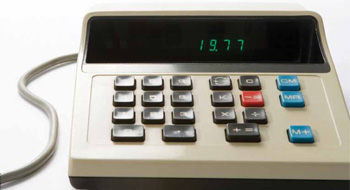

In the closing paragraph of my last column, I stated that few pension custodians currently provide adequate recordkeeping for GST/HST purposes and made the promise to delve further into that topic with this column.
Pension custodial trust recordkeeping for GST/HST requirements did not exist prior to Sept. 23, 2009, the date on which the new pension plan deemed supply rules set out in s. 172.1 of the Excise Tax Act became effective, so it should come as no surprise that custodial recordkeeping is inadequate to the task of facilitating efficient tax filings. Although at least one custodian has made an effort to record GST/HST paid separately from fee amounts paid, we have discovered inconsistencies and other issues such that aggregated GST and HST figures may not be reliably used for tax-reporting purposes.
The common standard practice followed by most pension trust custodians is to report the following information detail for each fee invoice logged by the custodian, often aggregated under expense categories (e.g., custodial, investment, actuarial, consulting, other, etc.):
- payment transaction date;
- brief (and often vague) description including invoice issuer and possibly period of invoice; and
- amount paid.
The detail may then be rolled up into a summary report similar to the following:
Expenses | Current period | Year to date |
Custodial fees | $ 150.00 | $ 600.00 |
Investment fees | 7,500.00 | 30,000.00 |
Actuarial fees | 10,000.00 | 15,000.00 |
Other fees | 8,000.00 | 20,000.00 |
GST paid | 1,282.50 | 2,280.00 |
HST paid | 0.00 | 0.00 |
Total expenses | 26,932.50 | 67,880.00 |
One significant problem with current pension trust reporting is that logged invoices very often do not, in fact, represent payments inclusive of GST/HST made by the custodian directly to the issuer of the invoice. Instead, it represents a reimbursement—which may or may not have been inclusive of GST/HST—to the pension plan sponsor for an invoice in respect of the plan that the sponsor has previously paid to the invoice issuer. For GST/HST tax-reporting purposes, the distinction is fundamentally important, and if it’s not discernible in custodial reporting, significant filing and the Canada Revenue Agency (CRA) audit/review challenges may arise.
Ideally, the following detail needs to be tracked for every expense payment made from a pension trust for purposes of preparing GST/HST filings:
- invoice date;
- period covered by invoice;
- payee (e.g., reimbursement to plan sponsor or direct payment to vendor);
- amount paid;
- invoiced GST/HST rate;
- invoiced GST/HST paid;
- self-assessed GST/HST remitted to CRA (on foreign taxable supplies where GST/HST is not invoiced), if any;
- description of expense (optional); and
- category of expense (optional).
To the extent that a pension trust custodian does not track this information, it will be necessary for the plan sponsor to do so. For a custodian willing to retool its recordkeeping to track this information for its clients, I would suggest the following “best practices” structure for summary-reporting purposes.
| Current period | Year to date |
|
Direct expenses (Note 1) | |||
Custodial fees | $ 157.50 | $ 630.00 |
|
Investment fees | 7,687.50 | 30,750.00 |
|
Actuarial fees | 0.00 | 0.00 |
|
Other fees | 0.00 | 0.00 |
|
Total direct expenses | $7,845.00 | $31,380.00 |
|
GST paid on direct expenses | 195.00 | 780.00 |
|
HST paid on direct expenses | nil | nil |
|
Reimbursed expenses (Note 2) |
|
|
|
Custodial fees | $ 0.00 | $ 0.00 |
|
Investment fees | 0.00 | 0.00 |
|
Actuarial fees | 10,500.00 | 15,750.00 |
|
Other fees | 8,400.00 | 21,000.00 |
|
Total reimbursed expenses | 18,900.00 | 36,750.00 |
|
GST paid on reimbursed expenses | 900.00 | 1,750.00 | (Note 3) |
HST paid on reimbursed expenses | 0.00 | 0.00 | (Note 3) |
GST/HST remittance/refunds |
|
|
|
Self-assessed GST/HST remitted | $187.50 | $ 750.00 |
|
GST/HST rebates/refunds | (0.00) | (1,000.00) | (Note 4) |
Net GST/HST remitted(refunded) | $187.50 | $ (250.00) | (Note 5) |
Note 1: Direct expenses are expenses paid directly to the vendor.
Note 2: Reimbursed expenses are amounts paid to the plan sponsor in respect of pension trust expenses.
Note 3: There may be no GST/HST paid on reimbursed expenses. Where GST/HST is paid, a tax adjustment note will be issuable by the plan sponsor to the custodial trustee in conjunction with pension plan deemed supplies, which both must be taken into account with any GST/HST filings.
Note 4: Self-assessed GST/HST applies only to direct expenses. Where no GST/HST is paid in respect of reimbursed expenses, GST/HST is captured under pension plan deemed supply rules.
Note 5: Discerning readers may have noted that the $2,280 of GST paid shown in the first example did not reconcile to the 5% GST rate on total expenses, due to the $1,000 refund/rebate that now appears in the “best practices” structure.
Regardless of whether custodial pension trust recordkeeping is maintained under legacy structures or retooled to facilitate more efficient GST/HST tax filings, plan sponsors should always reconcile their records of expenses submitted to the pension trust for payment against the reporting prepared by the custodian.
For sponsors with multiple pension trusts, master trust reporting is critically in need of retooling. Master trusts are considered as distinct entities from their participating pension trusts for tax purposes. It’s common practice for expenses to be rolled up or allocated down between master trusts and participating pension trusts, and such practice might be regarded by the CRA as being taxable transactions in and of themselves.
In addition to a good working knowledge of pension GST/HST rules, effective and efficient processing of pension-related GST/HST filings requires a thorough and detailed understanding of every applicable trust agreement, pension plan text and custodial financial reporting for all the plans maintained by any particular plan sponsor.
